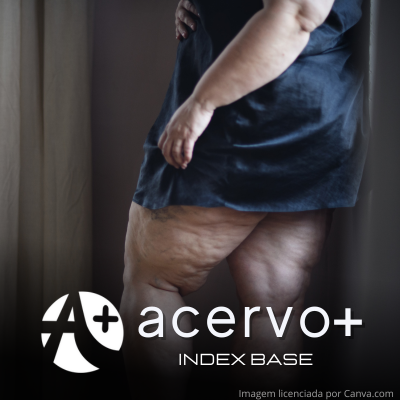Do diagnóstico ao tratamento: perspectivas sobre o manejo do lipedema
##plugins.themes.bootstrap3.article.main##
Resumo
Objetivo: Analisar o manejo do lipedema, desde o diagnóstico até o tratamento, considerando as estratégias disponíveis na atenção à saúde e os desafios para a sua abordagem adequada. Revisão bibliográfica: O lipedema é uma condição crônica caracterizada pela deposição anormal de tecido adiposo subcutâneo, frequentemente confundida com obesidade ou linfedema. Sua fisiopatologia envolve fatores hormonais, genéticos e metabólicos, e a progressão ocorre em estágios distintos, com impacto significativo na qualidade de vida física, emocional e social das pacientes. Na atenção primária, o diagnóstico precoce é fundamental, embora desafiado pela falta de conhecimento e recursos. Estratégias terapêuticas incluem drenagem linfática, compressão e suporte psicológico, sendo necessário o encaminhamento para tratamentos avançados, como lipoaspiração. A telemedicina e a criação de diretrizes específicas são destacadas como ferramentas para melhorar o manejo. Considerações finais: A atenção primária desempenha um papel essencial no reconhecimento precoce e na coordenação do cuidado de pacientes com lipedema. Investir na capacitação de profissionais, desenvolver protocolos nacionais e fortalecer abordagens multidisciplinares são estratégias fundamentais para melhorar os desfechos clínicos e a qualidade de vida dessas pacientes.
##plugins.themes.bootstrap3.article.details##
Copyright © | Todos os direitos reservados.
A revista detém os direitos autorais exclusivos de publicação deste artigo nos termos da lei 9610/98.
Reprodução parcial
É livre o uso de partes do texto, figuras e questionário do artigo, sendo obrigatória a citação dos autores e revista.
Reprodução total
É expressamente proibida, devendo ser autorizada pela revista.
Referências
2. AMATO ACM, et al. Ultrasound criteria for lipedema diagnosis. Phlebology, 2021; 36(8): 651–658.
3. ANNE WARREN PELED A, et al. Lipedema: diagnostic and management challenges. International Journal of Women’s Health, 2016; 8: 389–395.
4. ARTEMOVA AS, et al. Lipedema: a professional community’s view. Rossiiskii Meditsinskii Zhurnal: Organ Ministerstva Zdravookhraneniia RSFSR, 2023; 29(6): 467–474.
5. BUCK DW e HERBST KL. Lipedema: A relatively common disease with extremely common misconceptions. Plastic and Reconstructive Surgery. Global Open, 2016; 4(9): 1043.
6. BUSO G, et al. Lipedema: A call to action! Obesity (Silver Spring, Md.), 2019; 27(10): 1567–1576.
7. CÂMARA B, et al. Lipedema: Um problema subdiagnosticado. Gazeta Médica, 2024; 255–256.
8. CARBALLEIRA BRAÑA A e POVEDA CASTILLO J. The advanced care study: Current status of lipedema in Spain, A descriptive cross-sectional study. International Journal of Environmental Research and Public Health, 2023; 20(17).
9. CHACHAJ A, et al. Disability and emotional symptoms in women with lipedema: A comparison with overweight/obese women. Advances in Clinical and Experimental Medicine: Official Organ Wroclaw Medical University, 2024; 33(12): 1367–1377.
10. ERDEN Y, et al. A surge of interest: Analysing the increased public interest in lipedema using Google Trends. Phlebology, 2024.
11. ESEN ÖZDEMIR E, et al. YouTube as a source of information on lipedema: Property, quality, and reliability assessment. Lymphatic Research and Biology, 2023; 21(4): 403–409.
12. ESMER M e SCHINGALE FJ. Can physical therapy techniques slow down the progression of lipedema? Lymphatic Research and Biology, 2024; 22(6): 267–270.
13. FORNER-CORDERO I, et al. Prevalence of clinical manifestations and orthopedic alterations in patients with lipedema: A prospective cohort study. Lymphology, 2022; 54(4).
14. FORNER-CORDERO I, et al. Update in the management of lipedema. International Angiology: A Journal of the International Union of Angiology, 2021; 40(4): 345–357.
15. HALK AB e DAMSTRA RJ. First Dutch guidelines on lipedema using the international classification of functioning, disability and health. Phlebology, 2017; 32(3): 152–159.
16. HERBST KL, et al. Standard of care for lipedema in the United States. Phlebology, 2021; 36(10): 779–796.
17. JANTSCH AG, et al. Residency training in family medicine and its impact on coordination and continuity of care: An analysis of referrals to secondary care in Rio de Janeiro. BMJ Open, 2022; 12(2): 51515.
18. KATZER K, et al. Lipedema and the potential role of estrogen in excessive adipose tissue accumulation. International Journal of Molecular Sciences, 2021; 22(21): 11720.
19. KRUPPA P, et al. Lipedema stage affects adipocyte hypertrophy, subcutaneous adipose tissue inflammation and interstitial fibrosis. Frontiers in Immunology, 2023; 14.
20. KRUPPA P, et al. Lipedema-pathogenesis, diagnosis, and treatment options. Deutsches Arzteblatt International, 2020; 117(22–23): 396–403.
21. LEACH J. A family doctor has a holistic approach. BMJ (Clinical Research Ed.), 2022; 532.
22. NANKAM PAN, et al. Is subcutaneous adipose tissue expansion in people living with lipedema healthier and reflected by circulating parameters? Frontiers in Endocrinology, 2022; 13.
23. POOJARIII A, et al. Lipedema: Insights into morphology, pathophysiology, and challenges. Biomedicines, 2022; 10(12): 3081.
24. RUIZ-SILVA C, et al. Treatment of lipedema using cryolipolysis associated with microcurrents. IOSR Journal of Dental and Medical Sciences, 2024; 23(10): 5–12.
25. STANGE KC, et al. The role of primary care in improving population health. The Milbank Quarterly, 2023; 101(S1): 795–840.
26. WHITEBIRD RR, et al. Care coordination in primary care: Views of clinicians and clinic leaders. Journal of Nursing Care Quality, 2025; 40(1): 90–97.
27. WITTE T, et al. Water-jet-assisted liposuction for the treatment of lipedema: Standardized treatment protocol and results of 63 patients. Journal of Plastic, Reconstructive & Aesthetic Surgery: JPRAS, 2020; 73(9): 1637–1644.

